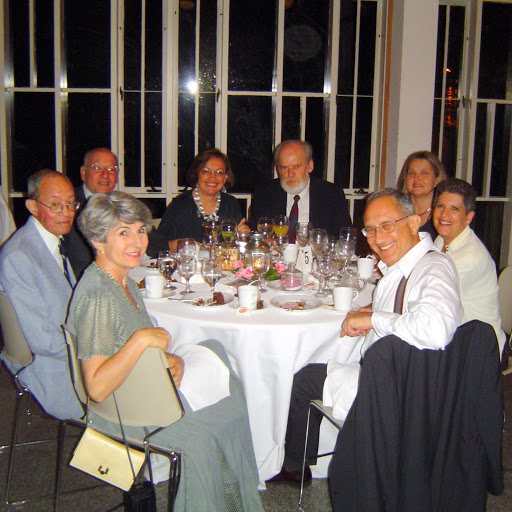Brian M Dennis
age ~46
from Johannesburg, MI
- Also known as:
-
- Brian Matthew Dennis
- Phone and address:
-
8720 Big Creek Rd, Johannesburg, MI 49751
(517)6176162
Brian Dennis Phones & Addresses
- 8720 Big Creek Rd, Johannesburg, MI 49751 • (517)6176162
- Adrian, MI
- Britton, MI
- Midlothian, TX
Specialities
Personal Injury • Insurance • Federal Regulation • Government • Federal Regulation
Isbn (Books And Publications)

Experimental Music in Schools: Towards a New World of Sound
view sourceAuthor
Brian Dennis
ISBN #
0193231956

Experimental Music in Schools: Towards a New World of Sound
view sourceAuthor
Brian Dennis
ISBN #
0193231964

Lawyers & Attorneys

Brian Dennis - Lawyer
view sourceSpecialties:
Personal Injury
Insurance
Federal Regulation
Government
Federal Regulation
Insurance
Federal Regulation
Government
Federal Regulation
ISLN:
907909871
Admitted:
1987
University:
University of Pittsburgh, B.A., 1982
Law School:
State University of New York at Buffalo, J.D., 1985
Name / Title
Company / Classification
Phones & Addresses
S. W. REEBOK LLC
UV TEAMS LTD
Us Patents
-
Methods And Systems For Improved Biodiesel Production
view source -
US Patent:8404005, Mar 26, 2013
-
Filed:Sep 10, 2009
-
Appl. No.:12/556857
-
Inventors:Brian H. Dennis - Arlington TX, US
Richard E. Billo - Colleyville TX, US
Christopher R. Oliver - Commerce Township MI, US
John W. Priest - Dallas TX, US
Elinor Kolesar - Ft. Worth TX, US -
Assignee:Board of Regents, The University of Texas System - Austin TX
-
International Classification:C10L 1/18
C11C 3/04 -
US Classification:44308, 44307, 554169, 554167, 554170
-
Abstract:In a method and system to produce biodiesel using an improved catalytic transesterification process, a first reactant and a second reactant are dispersed to form a laminar slug flow pattern within a microchannel of a microreactor, the first reactant and the second reactant being immiscible. The first reactant and the second reactant are mixed, thereby triggering a reaction between them to produce the biodiesel and glycerol, the mixing being convection-enhanced by shear stress induced circulation occurring within each slug of the reactants. The reaction takes place under a pressure that is less than 5 psi and under a temperature that is less than 70 degrees Celsius. Separation of the glycerol from the biodiesel occurs simultaneously with the mixing. Several microreactors are coupled in parallel to improve throughput of the biodiesel.
-
Devices And Methods Of Using Small Form Aluminum In Consecutive Batch Aluminum Chlorohydrate Processes
view source -
US Patent:20200398242, Dec 24, 2020
-
Filed:Mar 4, 2019
-
Appl. No.:16/969874
-
Inventors:- Euless TX, US
- Austin TX, US
Brian Hodges - Euless TX, US
Charles KOETTING - Euless TX, US
Frederick M. MacDONNELL - Arlington TX, US
Brian DENNIS - Arlington TX, US -
Assignee:C-KOE Metals, L.P. - Euless TX
Board of Regents, The University of Texas System - Austin TX -
International Classification:B01J 8/34
C01F 7/56
B01J 8/44
B01J 19/24
B01J 8/00 -
Abstract:A method of producing aluminum chlorohydrate comprises adding small form aluminum metal pellets to a reactant receiving space of a reactor tank to form a pellet bed; adding aqueous hydrochloric acid to the reactant receiving space of the reactor tank; and continuously circulating the aqueous hydrochloric acid through the pellet bed. In some embodiments, the continuously circulating aqueous hydrochloric acid dispels reaction gases from the pellet bed. Methods described herein can, in some cases, further comprise consecutively adding additional small form aluminum metal pellets to the reactant receiving space of the reactor tank as the small form aluminum metal pellets are consumed in the pellet bed.
-
Continuous Flow Reactor And Hybrid Electro-Catalyst For High Selectivity Production Of C2H4 From Co2 And Water Via Electrolysis
view source -
US Patent:20190233954, Aug 1, 2019
-
Filed:Jan 29, 2019
-
Appl. No.:16/261484
-
Inventors:- Austin TX, US
Wilaiwan Chanmanee - Grand Prairie TX, US
Brian Dennis - Arlington TX, US
Krishnan Rajeshwar - Arlington TX, US -
Assignee:Board and Regents, The University of Texas System - Austin TX
-
International Classification:C25B 11/04
C25B 11/03
C25B 3/04 -
Abstract:An electrochemical reactor for use with a liquid electrolyte is capable of generating gaseous products. An electrically conducting porous layer that is hydrophilic on the catalyst side and hydrophobic on the gas side are utilized. These different surface properties promote the transport of product gases formed at the catalyst through the porous layer to the gas side. The catalyst is formed from a hybrid CuO—CuBr film that has a high selectivity for ethylene gas from reacting COand water in an electrochemical cell.
-
Tandem Photochemical-Thermochemical Process For Hydrocarbon Production From Carbon Dioxide Feedstock
view source -
US Patent:20160340593, Nov 24, 2016
-
Filed:Jan 16, 2015
-
Appl. No.:15/111636
-
Inventors:- Austin TX, US
Brian Dennis - Arlington TX, US
Wilaiwan Chanmanee - Arlington TX, US -
International Classification:C10G 2/00
C07C 41/01
C07C 29/159
B01J 23/75
B01J 35/00 -
Abstract:The present invention is directed at an improved process for generating heavier hydrocarbons from carbon dioxide and/or carbon monoxide and water using tandem photochemical-thermochemical catalysis in a single reactor. Catalysts of the present disclosure can comprise photoactive material and deposits of conductive material interspersed on the surface thereof. The conductive material can comprise Fischer-Tropsch type catalysts.
-
Processes For Liquefying Carbonaceous Feedstocks And Related Compositions
view source -
US Patent:20160040072, Feb 11, 2016
-
Filed:Jan 12, 2014
-
Appl. No.:14/776423
-
Inventors:- Austin TX, US
Brian H. Dennis - Arlington TX, US
Richard E. Billo - Irving TX, US
John W. Priest - Dallas TX, US -
International Classification:C10G 1/06
C10G 3/00
C10G 1/08 -
Abstract:Methods for the conversion of lignites, subbituminous coals and other carbonaceous feedstocks into synthetic oils, including oils with properties similar to light weight sweet crude oil using a solvent derived from hydrogenating oil produced by pyrolyzing lignite are set forth herein. Such methods may be conducted, for example, under mild operating conditions with a low cost stoichiometric co-reagent and/or a disposable conversion agent.
Resumes

Brian Dennis
view source
Brian Dennis
view source
Brian Dennis
view source
Brian Dennis
view source
Brian Dennis
view source
Brian Dennis
view sourceMyspace
Plaxo

Brian Dennis
view sourceSan Antonio, TXAttorney at Arnold Taylor PC

Dennis Brian
view source
Brian Dennis
view sourceRVP at Technisource
Youtube

Brian J. Dennis
view source
Brian Dennis Stout
view source
Brian Dennis
view source
Brian Dennis Wagner
view source
Brian Dennis
view source
Brian Dennis Murphy
view source
Brian James Dennis
view source
Brian Dennis FIsher
view sourceGoogleplus

Brian Dennis
Work:
Chamois Spina - Bogarter (1965)
Tagline:
If you can stick it in a shoe, I don't trust it.

Brian Dennis
Work:
Home Depot - Flooring associate (2013)

Brian Dennis
Work:
NASA

Brian Dennis

Brian Dennis
Tagline:
A Normal guy
Bragging Rights:
3700 miles in 42 days, coast to coast on my bicycle.

Brian Dennis

Brian Dennis

Brian Dennis
Classmates

Brian Dennis
view sourceSchools:
Oliver Wendell Holmes School Philadelphia PA 1983-1986, Samuel H. Daroff Elementary School Philadelphia PA 1986-1988, William T. Tilden Middle School Philadelphia PA 1988-1990
Community:
Irene Caldi, Leroy Mcnair, Florence Nelson

Brian Dennis
view sourceSchools:
Long Prairie High School Long Prairie MN 1977-1981
Community:
Joyce Wells

Brian Dennis
view sourceSchools:
John Bartram School of Human Services Philadelphia PA 1990-1994

Brian Glover Dennis
view sourceSchools:
Ada H. Lewis Middle School Philadelphia PA 1975-1979
Community:
Gregory Miller, Monique Cole, Gwen Holston, Latoya Harris

Brian Dennis
view sourceSchools:
Dowagiac Union High School Dowagiac MI 1979-1983
Community:
Loretta Wilson, Brian Burns

Brian Dennis (Brian Dennis)
view sourceSchools:
Shenandoah Valley Christian Academy Stephens City VA 1989-1991
Community:
Bryan Allen

Brian Dennis
view sourceSchools:
Franklin Township High School Wanamaker IN 1978-1979
Community:
Laura Rush, Sharon Conover

Brian Dennis
view sourceSchools:
Saint John The Baptist School Ludlow MA 1971-1979
Community:
Dennis Vigneault, John Surprenant
Get Report for Brian M Dennis from Johannesburg, MI, age ~46













